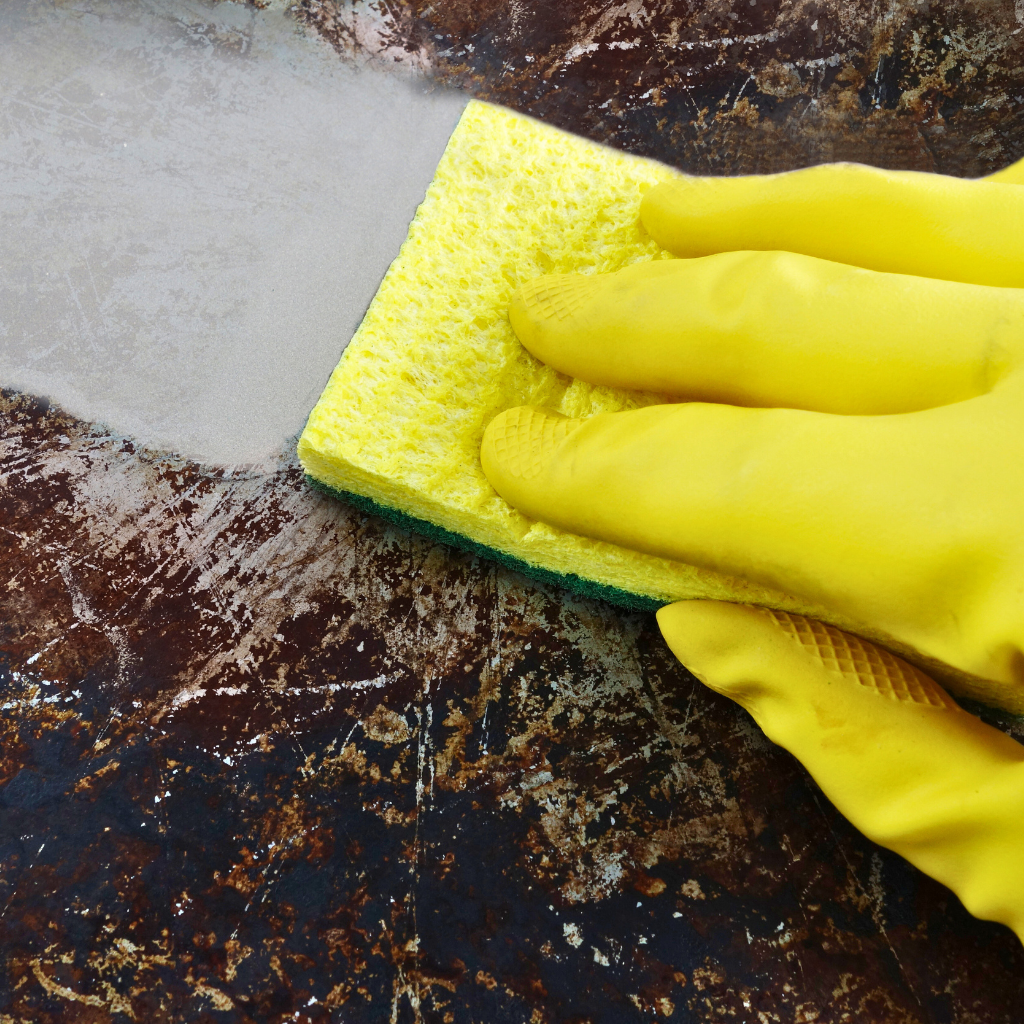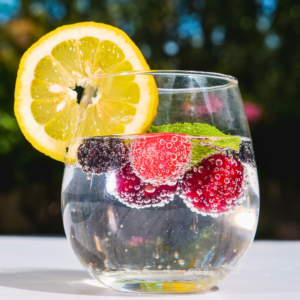To clean burnt food from a nonstick pan, try soaking with Baking Soda Paste, Vinegar And Water, or using a Lemons. These methods help preserve the pan’s nonstick coating.
Burnt food on a nonstick pan can be frustrating and damaging. Proper cleaning ensures the pan’s longevity and maintains its nonstick quality.
Table of Contents
Quick Tips For Prevention
Knowing three simple methods can help. But preventing this problem is even better. Follow these quick tips to keep your nonstick pan in great condition.
Avoid High Heat
Using high heat can damage your nonstick pan. It causes the coating to break down and burn food easily. Here are some tips to avoid high heat:
- Use medium or low heat: These settings are safer for nonstick pans.
- Preheat slowly: Give your pan time to warm up gradually.
- Avoid empty heating: Always have some oil or food in the pan when heating.
High heat can also warp your pan. Warping makes it cook unevenly and increases the chance of burning food. If you need high heat, consider using a different type of pan. Cast iron or stainless steel pans handle high temperatures better.
| Heat Level | Best Use |
|---|---|
| Low | Sauces, eggs, delicate foods |
| Medium | General cooking, sautéing |
| High | Boiling water, searing meats (use other pans) |
Remember, keeping the heat low or medium will protect your nonstick pan. Your food will cook evenly and not burn as easily.
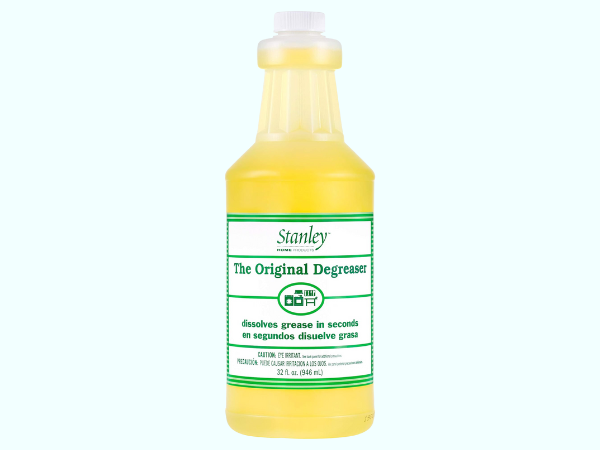
Original Degreaser – Removes Stubborn Grease & Grime
Method 1: Baking Soda Paste
One effective way is using a baking soda paste. This method is safe for nonstick surfaces and uses common household ingredients.
Mixing Ingredients
To start, gather the necessary ingredients. You need baking soda, water, and a small bowl. Follow these steps to make the paste:
- Measure out 2 tablespoons of baking soda.
- Add 1 tablespoon of water to the baking soda.
- Mix the ingredients in the bowl until they form a thick paste.
Ensure the paste is not too runny. If it is, add more baking soda. If it is too thick, add a bit more water. The consistency should be easy to spread but not watery. Here’s a quick reference table:
| Ingredient | Amount |
|---|---|
| Baking Soda | 2 tablespoons |
| Water | 1 tablespoon |
This paste is effective because baking soda is mildly abrasive. It can scrub off burnt food without damaging the nonstick coating. Once your paste is ready, you can move on to the application process.
Application Process
Now that you have your baking soda paste, it’s time to apply it to the burnt areas. Follow these steps:
- Spread the paste evenly over the burnt food areas.
- Let it sit for at least 15 minutes. This allows the baking soda to penetrate and loosen the burnt food.
- Use a soft sponge or cloth to gently scrub the area. Avoid using abrasive materials that can scratch the nonstick surface.
- Rinse the pan thoroughly with warm water.
- If any burnt food remains, repeat the process until the pan is clean.
Remember to be gentle. Nonstick coatings are delicate, and harsh scrubbing can damage them. Patience is key. Letting the paste sit longer can make scrubbing easier. Here’s a summary of the steps:
| Step | Action |
|---|---|
| 1 | Spread paste over burnt areas |
| 2 | Let it sit for 15 minutes |
| 3 | Gently scrub with a soft sponge |
| 4 | Rinse thoroughly with warm water |
Using a baking soda paste is a simple and effective way to clean burnt food from nonstick pans. It is safe and uses ingredients you likely already have at home. Just follow these steps, and your nonstick pan will be clean in no time.
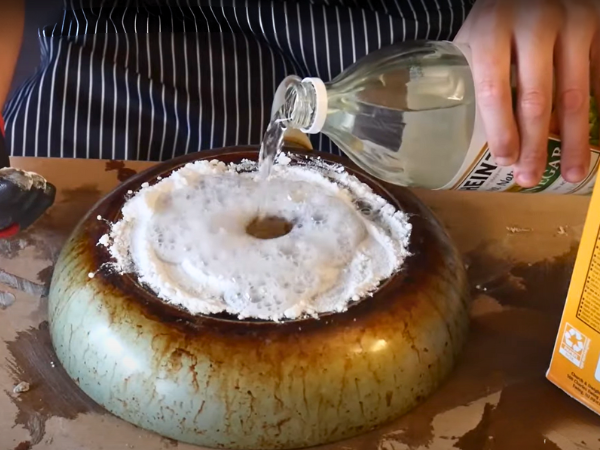
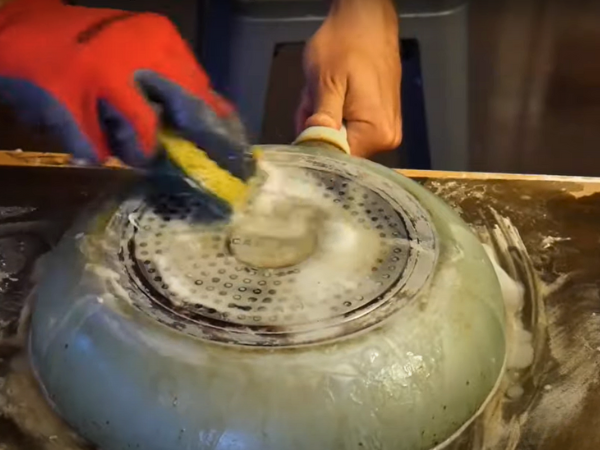
Method 2: Vinegar And Water
One effective method involves using vinegar and water. This method utilizes the natural acidity of vinegar to break down burnt residues, making it easier to clean the pan. Follow these simple steps to restore your nonstick pan to its original state.
Boiling Solution
Start by creating a vinegar and water solution. Mix equal parts of white vinegar and water in the pan. Ensure the mixture covers the burnt areas completely.
- Step 1: Pour equal parts of white vinegar and water into the pan.
- Step 2: Ensure the solution covers all burnt food.
- Step 3: Place the pan on the stove.
Next, bring the solution to a boil. Turn on the stove to medium heat and let the mixture boil for about 5-10 minutes. The vinegar’s acidity helps break down the burnt food particles, making them easier to remove.
- Step 4: Turn on the stove to medium heat.
- Step 5: Allow the solution to boil for 5-10 minutes.
After boiling, let the pan cool. This step is crucial for safety and to ensure the solution has time to work its magic.
- Step 6: Turn off the stove and let the pan cool.
- Step 7: Wait for the solution to cool before proceeding to the next step.
Scrubbing Technique
Once the solution has cooled, it’s time to scrub the pan. Use a non-abrasive scrubber or sponge to avoid damaging the nonstick coating.
- Step 8: Use a non-abrasive scrubber or sponge.
- Step 9: Gently scrub the burnt areas.
If there are still stubborn spots, add a small amount of baking soda to the scrubber. Baking soda provides additional abrasive power without scratching the nonstick surface.
- Step 10: Sprinkle baking soda on the scrubber if needed.
- Step 11: Continue scrubbing until the burnt food is removed.
Rinse the pan thoroughly with warm water. Ensure all the vinegar and burnt food particles are washed away.
- Step 12: Rinse the pan with warm water.
- Step 13: Ensure no residue remains.
Finally, dry the pan with a soft towel. Your nonstick pan should now be clean and ready for use again.
- Step 14: Dry the pan with a soft towel.
- Step 15: Store the pan properly to avoid future damage.
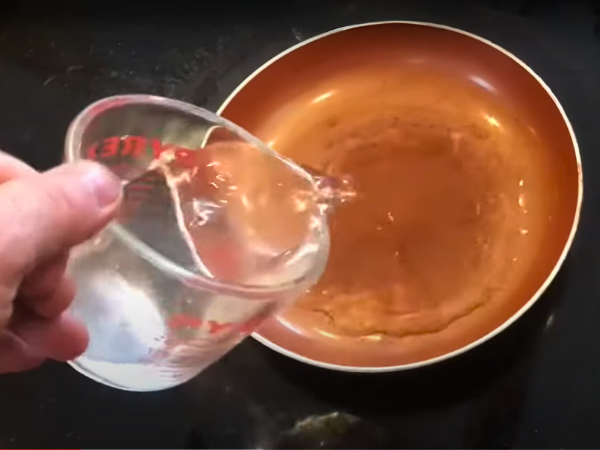
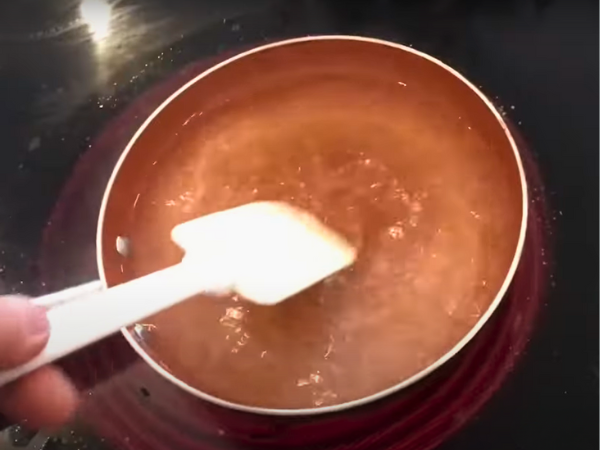
Method 3: How To Use Lemons To Clean A Nonstick Pan
Using lemons can be an effective and natural solution. Lemons are a great way to clean without using harsh chemicals. Their natural acidity helps break down burnt residue.
Preparing The Pan And Lemon
Start by gathering your supplies. You will need:
- 1-2 fresh lemons
- Water
- A sponge or soft cloth
Begin by ensuring the pan is cool to the touch. Safety first! Cut the lemons into thin slices. Thin slices allow for better juice extraction. Place the lemon slices into the pan, ensuring they cover the burnt areas.
Next, add water to the pan. Pour enough water to cover the bottom of the pan. The water should reach just above the burnt food. Avoid overfilling the pan with water.
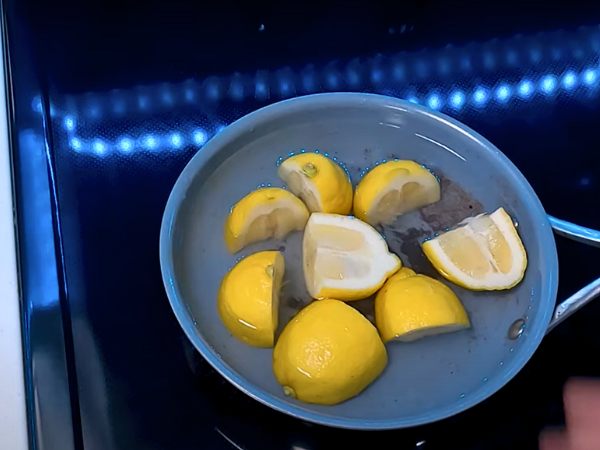
Applying And Simmering The Lemon
Place the pan on the stove. Turn the heat to medium. Allow the water and lemon mixture to come to a simmer. Do not let it boil. Boiling can damage the nonstick coating. Simmer for about 10 minutes. The acidity from the lemons will start to break down the burnt residue.
As the mixture simmers, use a wooden spoon to gently scrape the burnt bits. Be gentle to avoid scratching the nonstick surface. The burnt food should start to loosen and mix with the water.
After 10 minutes, turn off the heat. Let the pan cool for a few minutes. This cooling period helps loosen any remaining burnt bits.
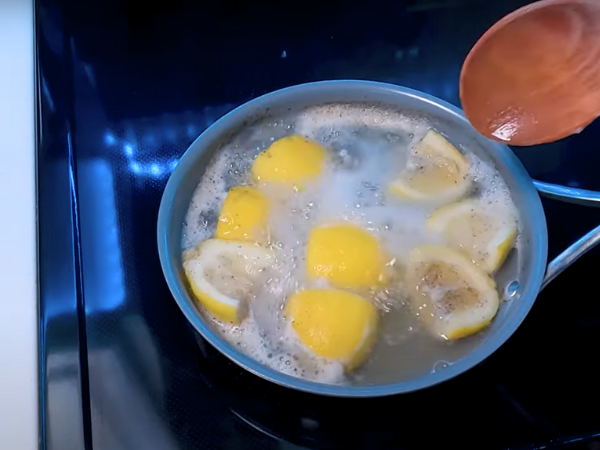
Scrubbing And Rinsing The Pan
Once the pan is cool, remove the lemon slices. Use a soft sponge or cloth to scrub the pan. Avoid using abrasive materials. They can damage the nonstick coating. Gently scrub in circular motions. Focus on the areas with burnt residue.
If some burnt bits are stubborn, repeat the lemon simmering process. Sometimes, multiple rounds are necessary for tough stains.
After scrubbing, rinse the pan with warm water. Make sure all lemon residue and burnt bits are washed away. Dry the pan with a soft towel.
Using lemons to clean a nonstick pan is effective and eco-friendly. It also leaves your pan smelling fresh and lemony!
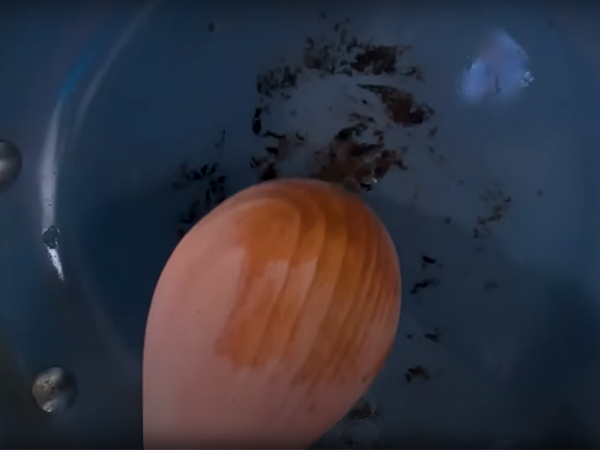
Safety First
Ensuring the pan remains in good condition is crucial. Before diving into the cleaning methods, prioritize safety first. Handling burnt food and cleaning agents improperly can lead to damage or injury. Follow these guidelines to clean your nonstick pan safely.
Avoid Abrasives
Using abrasive tools or cleaners can damage the nonstick surface. This not only reduces the pan’s effectiveness but also poses health risks. Here are some tips to avoid abrasives:
- Use a soft sponge or cloth: Opt for non-scratch sponges to gently clean the pan.
- Avoid steel wool: Steel wool is too harsh and can scratch the nonstick coating.
- Choose plastic or silicone tools: These tools are gentle and won’t damage the surface.
Consider the following table for a quick reference:
| Tool | Safe for Nonstick |
|---|---|
| Soft sponge | Yes |
| Steel wool | No |
| Plastic spatula | Yes |
| Metal spatula | No |
By avoiding abrasives, you extend the life of your nonstick pan. Always handle the pan with care to maintain its quality.
Use Non-toxic Cleaners
Opt for non-toxic cleaners to ensure safety and effectiveness. Harsh chemicals can damage the nonstick surface and pose health risks. Consider the following non-toxic options:
- Baking soda: A natural cleaner that works wonders on burnt food.
- White vinegar: Great for loosening stubborn burnt residues.
- Dish soap: Mild and effective for everyday cleaning.
Follow these steps for a safe cleaning process:
- Mix baking soda and water to form a paste.
- Apply the paste to the burnt areas.
- Let it sit for 15 minutes.
- Scrub gently with a soft sponge.
- Rinse thoroughly with warm water.
Alternatively, you can use a mixture of white vinegar and water:
- Fill the pan with equal parts white vinegar and water.
- Bring the mixture to a boil.
- Let it cool down completely.
- Scrub gently with a soft sponge.
- Rinse thoroughly with warm water.
Using non-toxic cleaners ensures your pan stays in good condition. Plus, it keeps your cooking environment safe and healthy.
When To Replace Your Pan
Understanding the signs of wear and how to choose a new pan can save you time and effort in the kitchen.
Signs Of Wear
Over time, nonstick pans can show signs of wear and tear. Knowing these signs can help you decide when it’s time for a replacement.
Here are some common signs:
- Scratches and Peeling: If you see deep scratches or peeling, it’s time to replace your pan. Scratches can lead to uneven heating and sticking issues.
- Discoloration: A change in color can indicate the nonstick coating is wearing off.
- Warping: If the pan doesn’t sit flat on the stove, it can cause uneven cooking.
- Sticking Food: If food starts sticking despite using oil or butter, the nonstick coating is likely compromised.
- Odors: If your pan retains food odors even after cleaning, it might be time for a new one.
Regular inspection of your nonstick pans can help you spot these signs early. Replacing a worn-out pan ensures better cooking results and safety.
Choosing A New Pan
When selecting a new nonstick pan, consider several important factors to ensure you get the best value and performance.
Follow these tips:
- Material: Look for pans made from durable materials like aluminum or stainless steel with a quality nonstick coating.
- Coating Type: Choose a pan with a PFOA-free nonstick coating for safety and health benefits.
- Handle Comfort: Ensure the handle is sturdy and comfortable to hold. Silicone handles offer better grip and heat resistance.
- Oven-Safe: Check if the pan is oven-safe, especially if you often use the oven for cooking.
- Size: Select the right size based on your cooking needs. Common sizes include 8-inch, 10-inch, and 12-inch pans.
- Brand Reputation: Opt for reputable brands known for quality and durability.
Investing in a good nonstick pan can enhance your cooking experience. Choosing the right pan ensures longevity and better performance in your kitchen.
Frequently Asked Questions
How Do You Get Burnt Food Out Of A Non-stick Pan?
Soak the non-stick pan in warm, soapy water. Gently scrub with a non-abrasive sponge. Rinse thoroughly and dry.
How Do You Get Severely Burnt Food Off A Pan?
Scrape off excess burnt food. Soak the pan in hot, soapy water for 15 minutes. Use a sponge or brush to scrub. For stubborn residue, sprinkle baking soda and add vinegar, then scrub again. Rinse and dry the pan.
How To Clean A Burnt Always Pan?
To clean a burnt Always Pan, soak it with warm soapy water for 15 minutes. Scrub gently with a non-abrasive sponge. For stubborn burns, make a paste of baking soda and water, apply, and scrub. Rinse thoroughly and dry. Avoid metal utensils to prevent damage.
How Do You Clean A Non-stick Pan?
Clean a non-stick pan with warm, soapy water and a soft sponge. Avoid abrasive scrubbers. Rinse thoroughly and dry with a soft towel. For tough stains, use baking soda paste.
